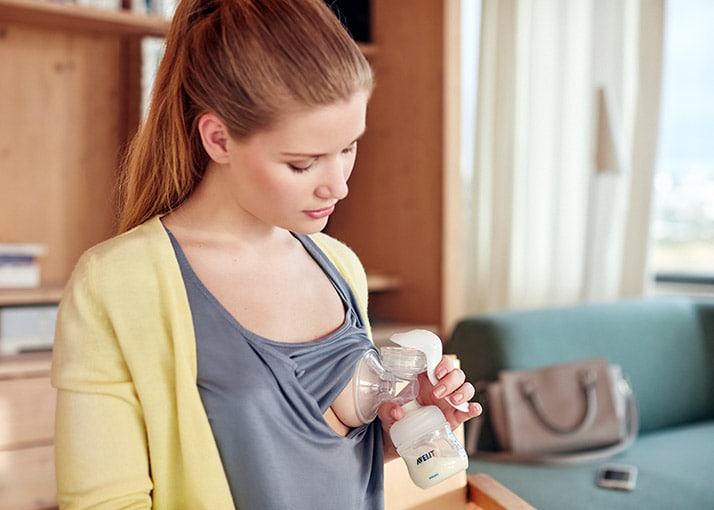With a click of those new-mum heels, many women return to work (breast pump in bag) determined to honour their commitment to breastfeeding. However, you may be surprised to discover that any efforts during the day can be overshadowed by your night-time routine. Read on to find out why! You may have become the ultimate "daytime expresser" at work, but as the months pass, experts observe that women tend to breastfeed less and less at home. Natural changes in routine, and a baby that starts sleeping for longer, can all result in a reduced milk supply. Making it all add up. Expressing when you are not with your baby can be a great way to maintain supply, but only if you are hitting your "magic number" per 24 hours. Your "magic number" is the amount of times you need to drain your breasts per day (feeding or expressing) to maintain a steady milk supply. This number differs among women, depending on the individual's breast storage capacity - the maximum volume of milk held by a full breast. Empty breasts stimulate milk production; full breasts tell the body to slow things down. If a feeding mother isn't expressing or breastfeeding enough to meet her "magic number", then her supply will dip! It’s quite logical really. The sunset solution. By re-introducing breastfeeding or expressing at night, you are more likely to hit your magic number. For some, it may be as simple as deciding to breastfeed last thing at night and first thing in the morning. Others may need to take over the night shift for a while. The good news is that more breastfeeding when together means less expressing when you're not. If you can figure this out at home, you will probably be able drop a pumping session at work! TIP! Lactation expert, Nancy Morbacher, suggests going no longer than 8 hours before draining your breasts – and try to avoid letting your breasts getting uncomfortably and overly full.
For more information on discovering your "magic number", read our article: The "magic number" for long-term milk production.
